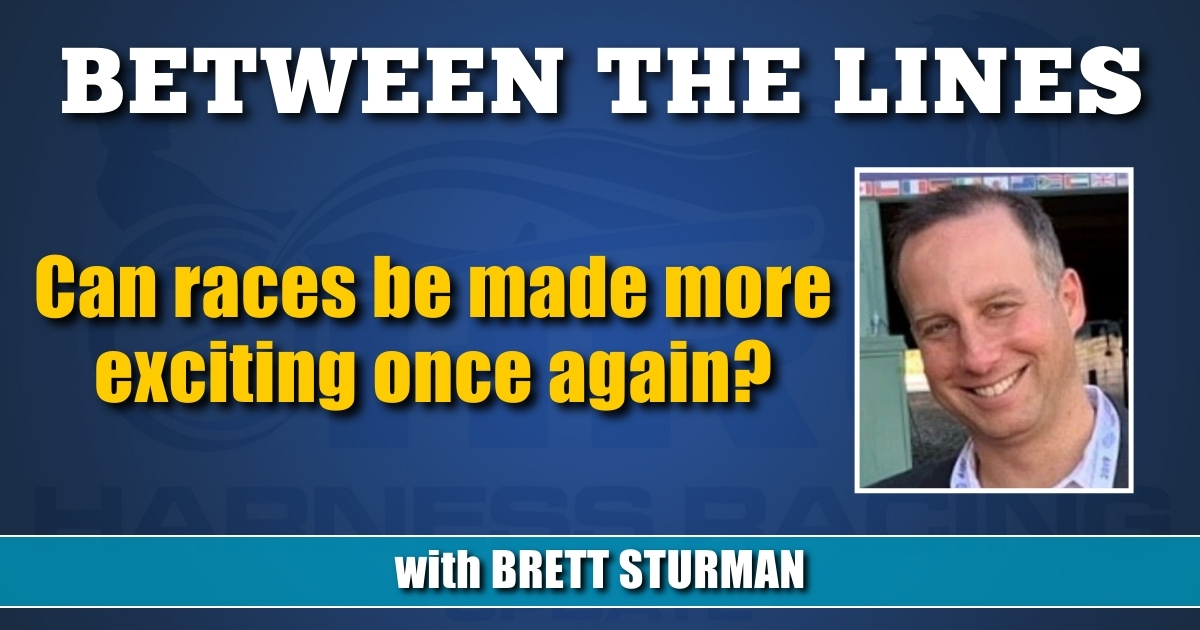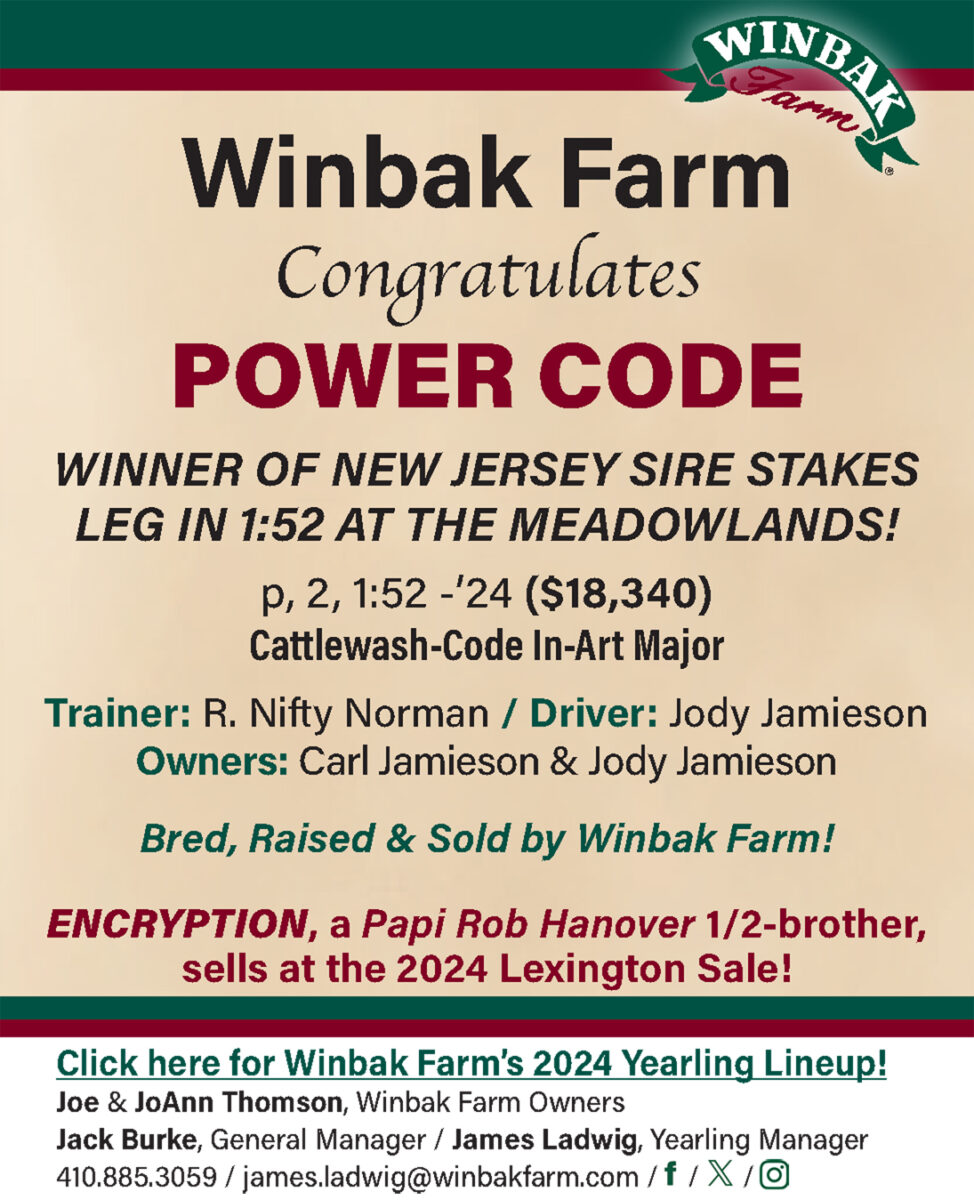

Can races be made more exciting once again?
Single-file racing with little movement does not make for a bright future for harness racing.
by Brett Sturman
If you were to watch a sampling of standard overnight races from days gone by to today, it’s almost like watching a different sport. Gone today is much of the mid-race movement and action. Even the famed “Meadowlands shuffle” of not too long ago where there’d be so many lead changes that a horse could go from first to last, is a thing of the past.
Today, for the most part, races are run easier. At a couple of tracks in particular, it’s nearly standard for there to be no horses pulled to the outside flow until after the half-mile. Last Monday’s preferred trot race at Woodbine Mohawk, along with comments from both horsepeople and fans couldn’t have personified the issue any better.
In the $36,000 race featuring the track’s best trotters, not a single horse in the field of eight left the pylons until the stretch. It was unusual even by current track standards such that track announcer Ken Middleton noted as they went past the half-mile, “Nobody’s moved a muscle from the backfield.” Growing more incredulous in tone nearing the final turn, Middleton said, “Not a horse has moved and they’re almost at three-quarters.” As the unchallenged front runner Amigo Volo won the race (how could he not by that point), Middleton concluded in what sounded like a contradiction which we’ll get into, “Amigo Volo stole one there, they gift wrapped it for Amigo Volo.” Replay here.
What ensued on social media platform X (formerly Twitter) was a lengthy and heated back and forth exchange of about 30 comments. I’ll just quote the start of it, the initial comment by a user named BradA, and the first response by Canadian Hall of Fame inductee, the great Blair Burgess.
BradA said, “Watch the single file racing. No right lines anywhere before the three-quarters at the preferred level. Totally unacceptable.” Blair Burgess’ response was as follows: “Ridiculous complaint. This is the top-level trot on the grounds and the best two horses earned the 1-2 position before the quarter. No one is required to pull on those horses and why should they? To sacrifice any chance of earning the small prize they are left racing for? WTF?”
The debate raged on from there and anyone who watches the race can come to their own conclusions. Likewise, I won’t debate Burgess’ finer points of the argument. But looking at this from a higher level, something is fundamentally broken in the way harness races are run when no one will even try after the first few seconds of a race. It didn’t always used to be like this.
So, what can be done to make the races less boring and frustrating for the sports remaining enthusiasts? This is a topic I’ve talked about on occasion with long-time owner and breeder, Eric Cherry.
Believing that drivers are influenced outside of their own understanding and creativity, Cherry has a scenario in mind in which drivers shouldn’t be able to see the tote board prior to races. In his estimation, drivers should drive the race and give their horse the best show, not letting betting trends and opinions decide how they drive.
I don’t know if such an idea would actually be possible to put into place, but I do like the spirit of it. More often than not, races take the form they do because shorter-priced horses are able to be placed in even more advantageous race positions with little resistance from others, setting up the race to then naturally discourage longer-priced horses from trying to improve their position.
In thoroughbred racing by contrast, the odds have almost nothing to do with how races are set up. Horses are run in accordance with their individual racing preference and either end up being good enough or not, but when they lose it’s not for lack of jockey confidence to give them a chance to legitimately compete to win.
Another interesting thought experiment would be to take the opposite purse structure of what The Meadowlands started to implement a couple of weeks ago. Instead of paying all starters, what if lesser starters got paid?
I’m not advocating for it but simply pondering the impact it would have on the way the races are run. If instead of the top 5 being paid which has been the long-held standard, what if only the top 3 horses got paid? Would there still be no movement until the latter race stages if you knew it was either a top 3 finish or bust?
Coming back to commentary from the Woodbine Mohawk Park race in question, one of my announcing pet-peeves is when announcers state that a driver stole a quarter, or a driver has put the field to sleep or some variation of that. Is the driver really ‘stealing’ anything if everyone else is letting them do it? Similarly, I don’t know how many times during a Meadowlands race I hear “no right lines being pulled.” I appreciate the announcer calling it out, but what kind of commentary does that say for the style of the races?
This comes back to the appeal of the amateur races at The Meadowlands. Some of the bigger bettors have problems with these races for the total opposite reason. In those races, there’s actually “too much” unpredictability, but most regular fans enjoy them and the races are well received in the wagering.
As with the amateur races, stakes races driven by the professionals are featured with the race flows, movement and excitement that all races used to contain. Racing would be well-served to find ways to move back towards that.















